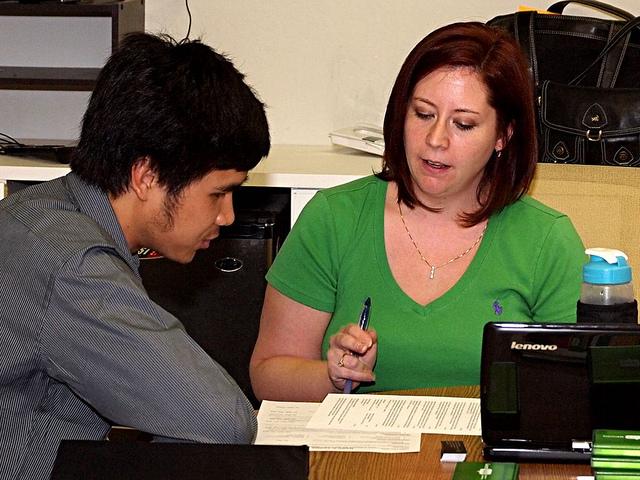Top Resume Tips for Job Seekers Looking to Land Their Dream Job.
Crafting a resume that stands out in today’s competitive job market requires more than just listing your qualifications. By focusing on keyword optimization, showcasing achievements effectively, customizing your resume for specific jobs, and adhering to design best practices, you can significantly improve your chances of landing an interview.
Keyword Optimization
When preparing your resume for a job, keyword optimization is crucial. Employers often use applicant tracking systems (ATS) to scan resumes before they reach human eyes. Understanding how ATS works is essential to getting past this digital gatekeeper.
Carefully read job postings for keywords, which often include specific skills, qualifications, and work experiences. Including these terms in your resume can significantly increase its chances of passing through the ATS successfully. For example, if a job description frequently mentions “project management,” ensure this phrase appears in your resume, preferably in a context that demonstrates your experience with it.
A practical tool for identifying keywords is a word-cloud generator. Copy and paste the job description into one of these tools to see which terms are most frequently used. This visual can guide you on which keywords to prioritize in your resume.
To illustrate, let’s say you’re applying for a data analyst role. The job description highlights skills like “data visualization,” “SQL,” and “predictive analytics.” Use these exact terms in your bullet points. Instead of saying “created charts for data representation,” you might write “utilized data visualization techniques to create comprehensive charts.”
Avoid overloading your resume with unrelated keywords. It’s about thoughtfully integrating them where they genuinely reflect your experience and skills. Each keyword should fit naturally into your resume content.
Another tip: use both the acronym and the full phrase if applicable. If a job posting mentions “CRM,” include both “Customer Relationship Management (CRM).” This ensures you cover all bases if the ATS is set to scan for one format over the other.
While formatting can enhance readability for humans, stick to simple layouts that ATS can easily parse. Use common fonts and avoid tables or graphics that ATS might not process correctly. Bold and italic text are usually fine, but flashy designs might get lost in translation.
Effectively Showcasing Achievements
When detailing your work experience, showcase your achievements in a quantifiable manner. This ensures that your responsibilities and skills are presented not merely as tasks you performed but as real contributions and successful outcomes. Numbers add credibility and clarity to your accomplishments, making it easier for potential employers to see the value you bring.
For instance, rather than stating, “Managed a team,” specify the impact of your leadership. A statement like, “Led a team of 10 to increase sales by 25% over three quarters” immediately paints a clearer picture of your capability and effectiveness.
A practical method for transforming job responsibilities into accomplishment statements is using action verbs paired with numbers. For example:
- Instead of: “Responsible for data entry”
- Try: “Streamlined data entry processes, reducing errors by 15% and increasing efficiency by 10 hours per month”
The CAR (Challenge, Action, Result) method is a well-regarded technique to ensure you’re effectively showcasing your achievements. This approach breaks down your accomplishments into three parts:
- Challenge: The problem or task you faced.
- Action: The steps you took to address the challenge.
- Result: The positive outcomes of your actions, preferably quantified.
For example: “Revamped the outdated filing system (Challenge), implemented a new digital filing protocol (Action), which cut document retrieval time by 40% and saved the company $10,000 annually (Result).”
When crafting these statements, keep the following tips in mind:
- Start with a strong action verb
- Follow with the task or project
- End with the quantifiable result
Remember, employers are looking for individuals who can make a difference in their organization. By quantifying your achievements and utilizing the CAR method, you show what you’ve done and paint a picture of the potential benefits you can bring to a new role.
Tailoring Resumes for Specific Jobs
To create a compelling resume, it’s crucial to customize it to the specific job you’re applying for. Generic resumes don’t stand out in today’s competitive job market where personalization is key. Customizing your resume involves adapting its content to highlight the most relevant skills, experiences, and qualifications that align with the job description.
Start by thoroughly analyzing the job description. Review the requirements and responsibilities mentioned, and identify the keywords and phrases that are emphasized. These terms provide insights into what the employer is looking for in an ideal candidate. Once identified, strategically incorporate these keywords into your resume to match their expectations.
When prioritizing your relevant experience and skills, focus on the sections of your resume that hold the most weight – typically the professional summary, skills, and work experience sections. Ensure these parts illustrate your suitability for the role.
Begin with a compelling professional summary that aligns closely with the job description. This summary should concisely articulate your most relevant qualifications and how they match the employer’s needs.
In the skills section, list the abilities that are most relevant to the job. If the job posting mentions specific software, techniques, or methodologies, make sure they feature prominently.
When detailing your work experience, adjust your job responsibilities and accomplishments to align more closely with the job you’re applying for. Use action verbs and quantifiable results to describe how your previous roles have equipped you with the skills and experience relevant to the new position.
One practical approach to efficient resume customization is maintaining a master resume. This comprehensive document should contain detailed accounts of all your experiences, job responsibilities, skills, and accomplishments. When applying for jobs, you can then pull relevant content from your master resume to create a focused version for each application.

Design and Formatting Best Practices
A clean and professional resume design plays a crucial role in making a positive impression on potential employers. Here are some best practices to help you design a standout resume:
- Readable Fonts: Stick to clean, easy-to-read fonts such as Arial, Calibri, or Helvetica. Keep the font size between 10 and 12 points for the main text, and slightly larger (14-16 points) for headers to ensure readability.
- Bullet Points: Use bullet points to list responsibilities, achievements, and skills succinctly. Aim for concise, impactful statements—bulleted lists should be brief, typically not exceeding one to two lines per bullet point.
- White Space: Utilize margins of at least one inch on all sides, and ensure there’s enough space between different sections to avoid a jam-packed look.
- Optimal Length: For most professionals, a one-page resume is sufficient. If you have extensive relevant experience, a two-page resume is acceptable, especially for senior roles.
Key Sections to Include:
- Professional Summary
- Work Experience
- Education
- Skills
Avoid Overly Creative Designs: While it can be tempting to use creative designs, especially if you’re in a creative field, it’s important to balance creativity with professionalism. Stick to simple layouts that are ATS-friendly. Avoid tables, graphics, images, and unconventional fonts that might not convert well in an ATS.
By adhering to these design and formatting best practices, you ensure that your resume is both visually appealing and easy to navigate. This approach enhances your chances of passing through ATS filters and makes a strong impression on hiring managers.
By integrating relevant keywords, quantifying your achievements, adapting each application, and maintaining a clean design, you present yourself as a strong candidate ready to make an impact. Remember, a well-crafted resume is your ticket to the interview stage, where you can further showcase your skills and experiences.



